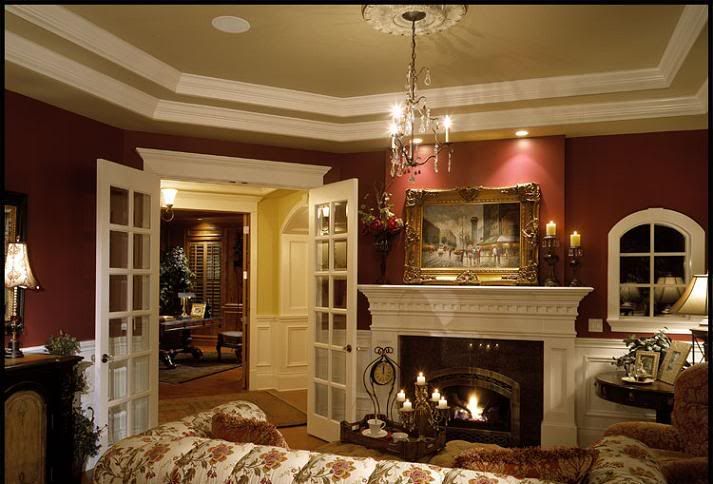Illustration: Sicilian Islamic themed woven brocade 12th century
Although the Islamic occupation of Sicily did not reach its final stage until 965, the influence of partial occupation and trade links with the larger Islamic world for the previous two centuries had an enormous influence on the crafts and culture of this Mediterranean island.
Sicily was well known for its textile production during the emirate period of its history. To be fair, most if not all of the textiles produced were largely Islamic in flavour and theme. However, Sicily had long been both a province of Byzantium and had maintained a sizeable Greek population. The culture of the eastern Greek empire was enmeshed into the local one, so that what textile work was produced had a combination of Byzantine and Islamic flavours, though of course it should be noted that the Islamic influence was always the strongest.
Illustration: Satellite map of Sicily
Sicilian Textiles not only found their way to different ports along the North African coast, but interestingly, much further north into Central Europe. They were well prized, expensive and even made their way into royal collections. It is interesting that although Christian Europe was technically in confrontation with Islam throughout this period, at a practical level trade and cultural exchange seemed relatively unhindered. It would be interesting to note how far Sicilian produced textiles, with their Islamic inscriptions and motifs, travelled into the heart of Christian Europe.
With the coming of the Normans to the island in about 1060, it added yet another element to the already confusing layers of Sicilian culture. Without going into the politics or religious aspects of the island's history in too great a detail, it is fair to say that the combination of cultures, although clashing ideologically, did produce some of the most beautiful textiles of the period. The border area of Islam which was to include all of the major islands in the Mediterranean from Crete to Mallorca, and of course modern Spain and Portugal, was a hot bed of innovation and creative thinking through a whole range of crafts from ceramics through to textiles.
Illustration: Spanish Islamic woven textile design 14th century
The illustrations shown in this article are all from the twelfth century and all from Sicily, bar one. The fourteenth century woven textile design above was placed here because for a long period this particular fabric was considered to be either Sicilian or Spanish. It couldn't really be decided in which region it had originated. It seems as though most experts are now happy to authenticate the design as being from Islamic Spain. However, although it is important to trace the origins of this particular piece, what is more important is that it also clearly represents a very similar style to the work produced in Sicily. It can be seen from this how extraordinarily expert was both the design and production of these European Islamic textiles.
Illustration: Sicilian Islamic themed woven brocade 12th century
It would be tempting, though inaccurate, to see Sicily with its Classical Greek and Roman routes, its layers of Byzantine, Islamic and Latin Christian cultures along with that of the Normans, as an ethnically and religiously tolerant oasis in the maelstrom of early medieval Europe. Although admittedly even long after Sicily became a province of the Normans, Arabic was still spoken as the court language and much of the Islamic institutions were kept in place, it proved only a matter of time before an intolerance of Islam, much harsher than that of the previous Islamic rulers, was set in place. Islam and all its external influences, including the decorative arts, were cleansed of much of the work that could be attributed to Islam. This spelt the end of a period of Sicilian textile history that had separated it, in style and influence, from the mainland of Italy and much of Europe. Later Sicilian textile work, although individual to the island to some extent, did tend to follow the fashions and themes set down by the mainland and the rest of Europe.
Illustration: Sicilian silk textile design 12th century
The loss of a connection between Sicily and North Africa was also a loss of connection between Europe and the Islamic arts. As European history developed any connections that did remain between the two cultures got narrower and more alien, until eventually the gulf between the two proved too difficult to bridge. However, these Sicilian Islamic themed textiles are still part of the European tradition of textile design and they were to play an interesting and important role in nineteenth century Britain in particular, where William Morris much admired the workmanship of these iconic designs.
Reference links:
History of Islamic Sicily (Islamic Surveys)
Arabic Administration in Norman Sicily: The Royal Diwan (Cambridge Studies in Islamic Civilization)
Siculo-Norman Art: Islamic Culture in Medieval Sicily (Islamic Art in the Mediterranean)
Al-Idrisi and Representations of the Medieval Muslim World: An entry from Gale's Science and Its Times























No comments:
Post a Comment